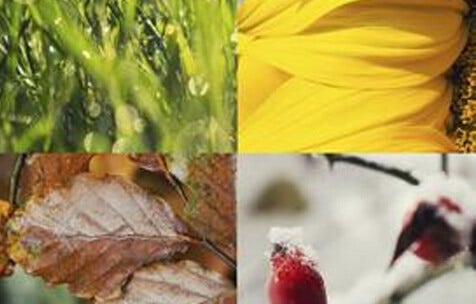

- Home
- Solution Center
- Learn
- Rose & Flower
- What To Plant In Spring
What To Plant In Spring
As spring waltzes into town with a flounce of color at the garden center, it's hard to resist digging in the dirt to sow seeds and plant seedlings. How can you be sure that what you plant will succeed?
Some plants, such as Broccoli or Pansies, grow best when air is cool and the days are shorter. Tomatoes, Zinnias and other crops thrive when both soil and air temperatures are higher and the days are long. Before breaking out your trowel and garden gloves, take a minute to learn what you should be planting in your garden this spring – no matter where you live.
Woody Plants
Spring is a good time to add shrubs and trees to the landscape. Choose bare-root plants when you're planting early in the season, while air temperatures are cool and rains are falling. If you're planting closer to the onset of summer, purchase container-grown plants, which already have an established root system and can be firmly established before summer climate-stresses arrive.
As you decide what plants to add to your yard, consider selections with deer-resistant features. For a warmer region, these might include Agave, Elderberry, Yerba Buena , California Fuchsia, Spicebush or Lavender. In cooler zones, try Cinquefoil, American Holly, Dwarf Alberta Spruce, Switchgrass or Hay-Scented Fern.
Annuals
Cool-season annuals grow and flower best in low air temperatures. Some of these chill-enhanced plants can withstand a light freeze (29-32°F), such As Pansy, Snapdragon, Flowering Stock and Ornamental Cabbage. In the Northern half of the country and at higher elevations in the South and West, dress up containers and planting beds with these or other cool-season charmers, such as English Daisy, Diascia, Painted Tongue, Love-In-A-Mist, Sweet Pea (Lathyrus odoratus) or Calendula.
Vegetables
In spring, the right time to dig in soil is when it's not too wet (clumps together) or too dry (like dust). It's right for digging when the texture is like moist cake – you can compress pieces of it together, but it crumbles easily. As soon as soil is workable, direct-sow frost-tolerant vegetables, including Peas, Spinach, Lettuces, Beet, Chard and Radish.
In places like the Pacific Northwest, Mountain West, Midwest and Northeast, direct-sow cool-season crops and set out vegetable seedlings of Broccoli, Brussels Sprouts and Cauliflower as early as 4-6 weeks before the last frost. For more information, read our articles on Direct Sowing: Starting Seeds Outdoors and how to Strengthen Seedlings Before Planting.
For sunny Southern California, plant warm-season vegetables (Tomato, Squash, Pepper, Eggplant or Cucumber). In low desert areas of the Southwest, shade Tomatoes when temperatures reach 100°F.
Southernmost gardeners can plant heat-tolerant vegetables, including Summer squash, Okra or Cantaloupe. In the rest of the South, direct-sow warm-season vegetable seeds, such as Beans, Corn, Squash and Cucumbers. Set out heat-loving veggie transplants (Tomato, Eggplant, Pepper) in late April, but be ready to protect plants if a late-season freeze occurs. To read about "Cold-Snap Care," click here.
Perennials
In warmer climes, such as Southern California, tuck container-grown perennials into landscapes so that plants can be established before dry summer weather arrives. Container-grown roses take off fast, whether they're planted in San Diego or Colorado.
In cool regions when soil is workable, plant summer-blooming bulbs, such as Allium, Freesia, and Asiatic, Tiger or Oriental Lilies. Hold off planting frost-tender summer roots (Canna, Dahlia, Elephant Ear) until all danger of frost has passed. If these shoots emerge and a frost descends, new growth will be damaged, possibly destroyed.
As temperatures creep upward in the Northeast and Midwest, established perennials start pushing new growth. As the first green shoots emerge, dig and divide fall-flowering perennials, such as Asters, Mums and Ornamental Grasses.



.jpg)








